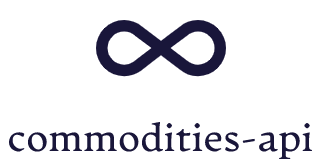Futures contracts are agreements to buy or sell an asset at a predetermined price on a specific future date. The buyer of the futures contract is said to have “bought the futures,” whereas the seller is said to have “sold the futures.” If the futures price is above the spot price, the buyer of the futures makes a profit. If it is below, then the seller makes a profit.
The futures market is a derivative market that allows participants to buy or sell an asset at a predetermined price at a specified future date. Futures contracts are standardized agreements that are traded on an exchange. These are used by companies and individuals to hedge risk, speculate on future price movements, and transfer risk from one party to another.
There are several ways to access market data on wheat and other commodities. However, today’s more reliable alternative is an API, in this case, a wheat futures API. An API for wheat front-month futures trading would allow you to get information about these futures contracts without having to build it yourself. This is great for upcoming developers who want to integrate this API into another system easily and quickly. There are many wheat futures APIs available on the internet, so choosing one can be difficult. So we decided to help you out by recommending this one: the Commodities API.
Commodities API
The commodities API makes future rate analysis simpler. It provides important market information about wheat and other commodities. The commodities API can help traders make better trading decisions through the complete information provided by its different endpoints. These include the conversion, the historical rates, the time-series data, and a couple more. The commodities API provides JSON responses, which work with all popular programming languages.
Utilize This API For Analysis Of Wheat Futures
To use the commodities API, you must first create an account on the commodities API website. After that, all you have to do is access it whenever you want. So when ready, log in and select the base currency, symbols, and endpoint. Finally, click “run” to launch the API call, it will get back to you with all the details!
As an example, we evaluate the “Latest rates endpoint,” which offers details on the most up-to-date commodity rates for a specific currency. Following our entry of the base currency (USD) and the symbol (WHEAT), we received the following information:
{"data":{"success":true,"timestamp":1682576460,"date":"2023-04-27","base":"USD","rates":{"WHEAT":0.0037138507693056},"unit":{"WHEAT":"per metric ton"}}}According to the answer, 0.0037138507693056 metric tons are equal to one US dollar.
By using the Commodities API, you will obtain market information not only for wheat front month futures trading. You will also receive market information for any other commodity that you might be interested in or need information about. The use of its different endpoints will help you predict market changes and make smarter investment decisions. Pick a plan that can be customized to your needs. Overall, it gives a monthly cap of 100,000 API queries with a 60-second update interval. So what are you waiting for? Get started with the commodities API today!



